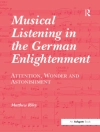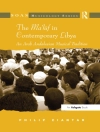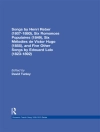The fame of Giacomo Meyerbeer is associated preeminently with the operatic stage, but he wrote for the voice extensively in other genres as well, and produced a small body of carefully crafted religious works throughout his life that reveal the depth of his religious convictions, and also his ecumenical openness to all forms of religious devotion.While studying with the Abbe Vogler in Darmstadt, the young composer had opportunities to show off his skills and serious endeavours. These were crowned by the composition of choral settings for seven religious odes by the influential eighteenth-century poet, Friedrich Gottlieb Klopstock (1724-1803) (Sieben Geistliche Gesaenge, 1812, revised 1841). During his stay in Vienna, the young Meyerbeer produced another religious song in 1814, a setting of Friedrich Wilhelm Gubitz’s meditational poem "An Gott". This gifted and richly varied youthful work for four solo voices is characterized by its blooming melody and simple piano accompaniment. The seven Klopstock Lieder (or Sieben Geistliche Gesaenge), also for vocal quartet, are on a higher artistic level. Klopstock, famous for his religious epic Der Messias (1745-73) inspired by Virgil and Milton, was regarded as a great religious poet who, particularly through his highly influential odes, helped to inaugurate the golden age of German literature. The seven poems used by Meyerbeer, in both strict strophe and freely composed verse effusion, capture the essence of Klopstock’s vision, the rhetorical and rhapsodic nature of his spiritual fervour, modelled closely as they are on the Psalms. They affirm a life-transforming faith in the resurrection (Morgenlied), proclaim a Trinitarian faith in the creator-redeemer (Dem Dreieinigkeit), the enthusiasm of a believing community in sacrament and Sabbath (Vorbereitung zum Gottesdienst), a prayer of thanksgiving and divine consolation (Danklied), a renewal of faith in forgiveness and covenantal promise (Nach dem Abendmahl), exhilaration in earthly pilgrimage and the promise of immortality (Wach’ auf, mein Herz), and praise of Jesus as revelation of the divine light and wisdom, teacher of how to live and how to die (Jesus Christus wir sind hier). The Klopstock Lieder are highly lyrical and melodic, and for all their considerable technical challenges, are easily performable, and indeed were later revised for a wider European audience (1841).Meyerbeer’s early involvement with religious texts continued intermittently throughout his life. Other secular songs with an overt religious imagery or intention, include "Le voeu pendant l’orage" (1830) for soprano solo (which is basically a prayer to the Blessed Virgin in time of fear), the two dramatic monologues for musing monks-"Le Moine" (1834) and the "Cantique du Trappiste" (1842)-the baptismal song ("Le bapteme") (1841), the devotional "Le Chant du dimanche" (1841), and the penitential effusion "Le penitent" (1842). All these were included in the Quarante Melodies of 1849, and thus became widely known. These small occasional works had their own particular social purposes, and serve as a bridge to this composer’s most encompassing and important religious works.Meyerbeer’s two most famous religious works were written late in his life, and within four years of each other. The monumental eight-part setting of Psalm 91 (known as "Trost in Sterbengefahr"-comfort in danger of death) (for four soloists and double chorus a cappella) was composed at the request of King Friedrich Wilhelm IV for the Berlin Cathedral in 1853. The music, for all its complex vocal disposition, breathes a trusting intimacy akin to that of Mendelssohn’s psalm settings that became so popular. It contrasts with the intimate and beautiful four-part offertorium Pater Noster (1857), in the purest of church styles, also written for the Berlin Domchor, and printed in the musical journal La Maitrise later in the same year. This motet deserves a high place among the many settings of this most famous of prayers. Its serene melody operates on a striking principle of contrast between the fortissimo of the emphatic injunction of the phrase "as we forgive those who trespass against us" and the contrasting pianissimo used for anxiety and contrition of the following "and lead us not into temptation".The success with which Meyerbeer was able intuitively to identify with and experience the nuances of ancient literature is evident in his last great sacred work, the Cantique tire de l’imitation de Jesus Christ for bass solo, mixed chorus and organ in 1859-a free rewriting by Pierre Corneille of Thomas a Kempis’s "Qui sequitur me, non ambulat in tenebris". It was called the Busslied (or penitential song) when published in the German translation by Ludwig Rellstab with instrumental praeludium (1862-3), the year before the composer’s death. This song of world-weariness and hope in the divine mercy and peace is a reflection of Meyerbeer’s deep religious sensibility.
Robert Ignatius Letellier
Giacomo Meyerbeer [PDF ebook]
Sacred Works
Giacomo Meyerbeer [PDF ebook]
Sacred Works
Купите эту электронную книгу и получите еще одну БЕСПЛАТНО!
Формат PDF ● страницы 101 ● ISBN 9781443822350 ● издатель Cambridge Scholars Publishing ● опубликованный 2010 ● Загружаемые 6 раз ● валюта EUR ● Код товара 2656861 ● Защита от копирования Adobe DRM
Требуется устройство для чтения электронных книг с поддержкой DRM












